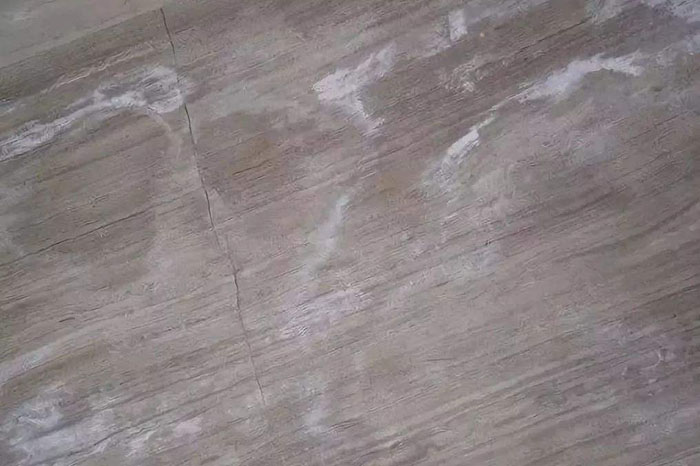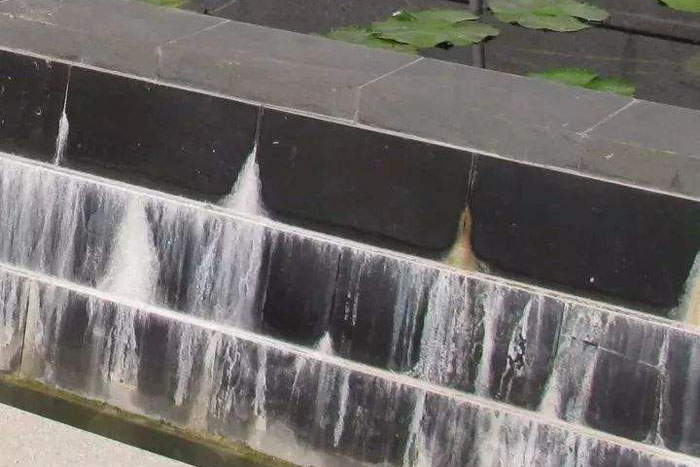During the installation of wet-pasted natural stone walls, the stone slabs will appear like "watermarks". As the mortar hardens and dries, the "watermarks" will shrink slightly, or even disappear. They appear in isolation and scattered. However, as time goes by, especially when outdoor rainwater or wet weather is repeatedly encountered, water invades from the joints of the slab or the surface of the stone, and the water spots of the natural stone gradually become larger and connect into pieces in the joints, and the plates deepen locally. , The gloss is dim, and white crystals are precipitated at the seam of the plate, which will not fade for many years, which will seriously affect the appearance. In this case, it is an efflorescence phenomenon. So, let's briefly understand the cause and treatment of marble efflorescence.

1. There is too much water on the ground, and the stone has been in a damp or water-invaded environment for a long time, causing water to penetrate the stone through the protective layer.
Precautions: ①If the laid stone is in a dark, humid or even heavy moisture environment, you should make a model first if you are unsure. ② Do not spray large amounts of water on the stone before operation. ③ A moisture-proof layer should be provided under the ground wall roots. If there are stone decorations on the floor of water-use rooms such as toilets and bathrooms, they should be treated with anti-seepage treatment.
2. The stone protective liquid can't be applied.
Precautionary measures: When signing a contract with a stone factory, it is first necessary to make it clear that the board does need to be protected on six sides, and the protective liquid should be of good quality.
Before applying the protective agent, the stone should be kept clean and dry.
The number of brushing passes and the brushing thickness should meet the standards, and the brushing part should be completely complete.
After painting, protect it from rain.
After the stone arrives, you can sample water and check the protective performance.

3. Due to the soft texture or large holes of some stones, when they are selected as ground stones, they are protected on six sides before construction, but due to the soft and porous characteristics of this type of stone, even if it is protected, The effect is generally not very good, the alkaline substance in the cement sand will be easily precipitated.
Precautionary measures: We usually encounter softer stone materials such as French wood-grain stone, and more porous stones such as beige travertine. When constructing ground materials, we generally choose white cement instead of black cement. Although the strength and viscosity of white cement are a little worse than that of black cement, the material composition of the two is different. White cement is used to paste the ground stone. Through the squeegee on the back of the stone, it can form a good airtight protection on the back of the stone. The precipitates between the seams of the stone slabs will also be faded due to white, effectively preventing efflorescence.
4. During on-site construction, the integrity of the original protection was destroyed due to the breakage or cutting of the board.
Precautionary measures: When constructing on site, prepare protective liquid. The stone after fracture repair or cutting should be repainted with protective liquid to ensure the overall integrity of the protection. Otherwise, the water will enter the interior of the stone along the cracks and loose parts of the stone, increasing the humidity of the stone, thus forming a vicious circle, and efflorescence will appear over time.